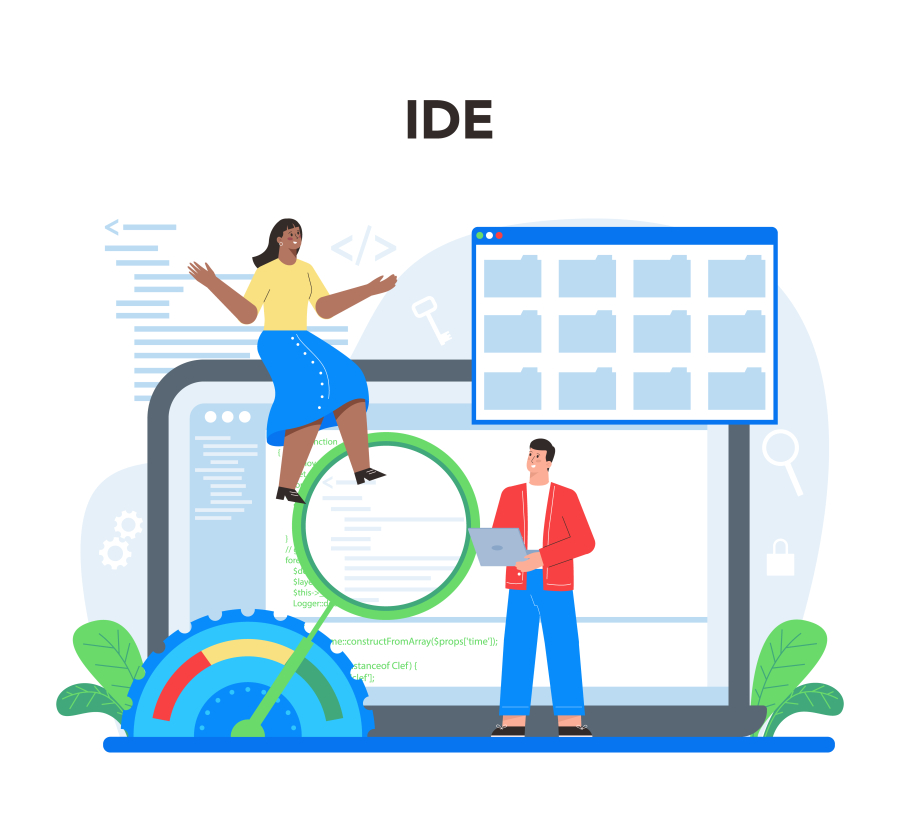How to Build an Email List as a Freelance Consultant
As a freelance consultant, your greatest asset isn't just your skillset—it’s your network. And in the digital world, one of the most valuable networks you can own is your email list. Unlike social media followers or platform clients, your email list is something you control entirely, giving you a direct line of communication with potential clients, collaborators, and loyal followers. At FreelancerBridge, we believe in empowering independent professionals with tools that ensure long-term success, and list-building is one of the most overlooked yet most powerful marketing strategies. In this guide, we’ll show you exactly how to build and grow an email list as a freelance consultant, step-by-step, using strategies designed to drive client engagement and repeat business.
Long Description
1. Why Freelancers Need an Email List
Many freelancers rely heavily on LinkedIn, job platforms, or social media to get clients. While these platforms are useful, they are not in your control. An email list allows you to:
Build long-term relationships with leads
Promote your services directly
Share valuable content to build authority
Announce new offerings, promotions, or case studies
Segment audiences based on interest and behavior
It’s one of the most cost-effective and reliable marketing tools for freelance consultants.
2. Define Your Ideal Email Subscriber
Before you begin collecting emails, define your target audience. This helps you tailor your messaging and lead magnets.
Ask Yourself:
Who are your ideal clients?
What industry do they belong to?
What are their biggest pain points?
What solutions are they looking for?
Example: If you're a legal consultant, your ideal subscribers may be startup founders or small business owners looking for affordable contract reviews.
3. Choose the Right Email Marketing Platform
Several email tools cater to freelancers and small businesses. Choose one that matches your budget and needs.
Popular Tools:
Mailchimp (beginner-friendly and free up to 500 subscribers)
ConvertKit (great for creators and consultants)
MailerLite (affordable with automation features)
ActiveCampaign (advanced segmentation and CRM)
Make sure the tool allows for automation, tags, and segmentation as your list grows.
4. Create a Valuable Lead Magnet
A lead magnet is a free, high-value resource offered in exchange for someone’s email address.
Effective Lead Magnet Ideas:
Free PDF guide (e.g., “10 Legal Clauses Every Startup Needs”)
Checklist or template (e.g., “Weekly Bookkeeping Checklist for Freelancers”)
Email course (e.g., “5-Day Guide to Structuring Freelance Contracts”)
Free consultation (e.g., 15-minute legal audit or financial strategy session)
The more relevant your lead magnet is to your audience’s pain points, the higher your conversion rate.
5. Design High-Converting Opt-in Forms
Your website is your primary real estate for collecting emails. Ensure that opt-in forms are visibly placed and easy to use.
Where to Place Forms:
Homepage (above the fold)
Blog posts (mid and end of articles)
Sidebar and footer
Exit-intent popups
Landing pages
Tips for High Conversions:
Keep forms short (name and email only)
Use action-driven CTA buttons (“Get the Free Guide”)
Use contrasting colors to draw attention
6. Build a Dedicated Landing Page
A landing page focuses solely on encouraging a user to sign up. It removes distractions and increases conversion rates.
Landing Page Elements:
Clear headline describing the benefit
Visual mockup or preview of the lead magnet
Short explanation of who it’s for
Simple form with CTA
Use tools like Carrd, Leadpages, or your website CMS to design a clean, focused page.
7. Promote Your Lead Magnet Everywhere
To grow your list, you need traffic. Promote your lead magnet across multiple digital channels.
Promotion Ideas:
Add the link to your email signature
Share on LinkedIn, Facebook groups, and Twitter
Add to your freelancer profiles (Upwork, Fiverr, etc.)
Mention it in your blog posts or guest posts
Use a pinned post on your LinkedIn profile
You can also run low-budget ads to your landing page if you want to scale quickly.
8. Write a Welcome Email Series
The first few emails set the tone for your relationship. A welcome email series builds trust and introduces your services.
Typical Welcome Series Structure:
Email 1: Deliver the lead magnet, thank them, and tell them what to expect
Email 2: Share your story and mission
Email 3: Highlight your services and how you help clients
Email 4: Share a client success story or case study
Email 5: Include a soft call to action (schedule a call, ask a question, visit your services page)
These emails help convert subscribers into leads and clients over time.
9. Segment Your Email List
Segmentation allows you to send more relevant, personalized content to different types of subscribers.
Segmentation Ideas:
By industry (startups, agencies, solopreneurs)
By service interest (legal, accounting, consulting)
By behavior (clicked a link, downloaded a resource)
This increases open rates, click-throughs, and ultimately conversions.
10. Offer Value Consistently Through Email Content
Once your list is growing, you need to keep your audience engaged.
Email Content Ideas:
Weekly tips related to your niche (e.g., tax, legal, business)
Links to your latest blog posts or videos
Client success stories
Seasonal updates or reminders
Behind-the-scenes insights from your freelance work
Aim to email your list at least once a week or biweekly, so they stay familiar with your brand.
11. Use Email to Sell Your Services Softly
Avoid hard selling in every email. Instead, position your services as solutions to real problems.
Soft Sell Techniques:
Add a short “Work With Me” section in your footer
Share mini case studies with a call-to-action
Invite them to book a free consultation
Create a limited-time offer for subscribers
Over time, subscribers who receive value will become more likely to buy.
12. Track and Optimize Your List-Building Performance
Email marketing is most effective when you track and adjust your approach.
Important Metrics:
Open rate (aim for 20–30%)
Click-through rate (aim for 2–5%)
Unsubscribe rate (keep under 1%)
Lead magnet conversion rate (above 20% is strong)
Review performance monthly and tweak your subject lines, content, or offers to improve.
13. Clean Your Email List Regularly
Inactive subscribers can lower your deliverability and engagement.
How to Clean Your List:
Remove subscribers who haven’t opened in 3–6 months
Send re-engagement campaigns
Let people update preferences or unsubscribe easily
A smaller, active list is more valuable than a large, cold one.
14. Stay GDPR and CAN-SPAM Compliant
As a freelance consultant, it’s important to follow legal standards for email marketing.
Best Practices:
Always get clear consent before adding people to your list
Use double opt-in (confirmation email)
Provide an unsubscribe link in every email
Never purchase email lists
This protects your reputation and ensures compliance with data protection laws.
15. Integrate Email with Your Freelance Workflow
Make email list-building a part of your overall client acquisition and content strategy.
Suggestions:
Add a checklist CTA in your proposals
Offer lead magnets after webinars or consultations
Cross-link your email list in blog posts and guest content
Use email as a nurturing path in your sales funnel
The more you integrate email into your routine, the faster your freelance brand will grow.
Conclusion
Building an email list as a freelance consultant is not just about collecting email addresses—it’s about creating a qualified audience of people who trust you, need your expertise, and are willing to pay for your services. By offering value through strategic lead magnets, optimizing your website, delivering consistent email content, and nurturing relationships, you create a long-term channel for growth, stability, and independence. At FreelancerBridge, we help professionals like you build smarter, stronger freelance businesses. Start your email list today—and watch how it transforms your client pipeline over the next 6–12 months.
As a freelance consultant, your greatest asset isn't just your skillset—it’s your network. And in the digital world, one of the most valuable networks you can own is your email list. Unlike social media followers or platform clients, your email list is something you control entirely, giving you a direct line of communication with potential clients, collaborators, and loyal followers. At FreelancerBridge, we believe in empowering independent professionals with tools that ensure long-term success, and list-building is one of the most overlooked yet most powerful marketing strategies. In this guide, we’ll show you exactly how to build and grow an email list as a freelance consultant, step-by-step, using strategies designed to drive client engagement and repeat business.
Long Description
1. Why Freelancers Need an Email List
Many freelancers rely heavily on LinkedIn, job platforms, or social media to get clients. While these platforms are useful, they are not in your control. An email list allows you to:
Build long-term relationships with leads
Promote your services directly
Share valuable content to build authority
Announce new offerings, promotions, or case studies
Segment audiences based on interest and behavior
It’s one of the most cost-effective and reliable marketing tools for freelance consultants.
2. Define Your Ideal Email Subscriber
Before you begin collecting emails, define your target audience. This helps you tailor your messaging and lead magnets.
Ask Yourself:
Who are your ideal clients?
What industry do they belong to?
What are their biggest pain points?
What solutions are they looking for?
Example: If you're a legal consultant, your ideal subscribers may be startup founders or small business owners looking for affordable contract reviews.
3. Choose the Right Email Marketing Platform
Several email tools cater to freelancers and small businesses. Choose one that matches your budget and needs.
Popular Tools:
Mailchimp (beginner-friendly and free up to 500 subscribers)
ConvertKit (great for creators and consultants)
MailerLite (affordable with automation features)
ActiveCampaign (advanced segmentation and CRM)
Make sure the tool allows for automation, tags, and segmentation as your list grows.
4. Create a Valuable Lead Magnet
A lead magnet is a free, high-value resource offered in exchange for someone’s email address.
Effective Lead Magnet Ideas:
Free PDF guide (e.g., “10 Legal Clauses Every Startup Needs”)
Checklist or template (e.g., “Weekly Bookkeeping Checklist for Freelancers”)
Email course (e.g., “5-Day Guide to Structuring Freelance Contracts”)
Free consultation (e.g., 15-minute legal audit or financial strategy session)
The more relevant your lead magnet is to your audience’s pain points, the higher your conversion rate.
5. Design High-Converting Opt-in Forms
Your website is your primary real estate for collecting emails. Ensure that opt-in forms are visibly placed and easy to use.
Where to Place Forms:
Homepage (above the fold)
Blog posts (mid and end of articles)
Sidebar and footer
Exit-intent popups
Landing pages
Tips for High Conversions:
Keep forms short (name and email only)
Use action-driven CTA buttons (“Get the Free Guide”)
Use contrasting colors to draw attention
6. Build a Dedicated Landing Page
A landing page focuses solely on encouraging a user to sign up. It removes distractions and increases conversion rates.
Landing Page Elements:
Clear headline describing the benefit
Visual mockup or preview of the lead magnet
Short explanation of who it’s for
Simple form with CTA
Use tools like Carrd, Leadpages, or your website CMS to design a clean, focused page.
7. Promote Your Lead Magnet Everywhere
To grow your list, you need traffic. Promote your lead magnet across multiple digital channels.
Promotion Ideas:
Add the link to your email signature
Share on LinkedIn, Facebook groups, and Twitter
Add to your freelancer profiles (Upwork, Fiverr, etc.)
Mention it in your blog posts or guest posts
Use a pinned post on your LinkedIn profile
You can also run low-budget ads to your landing page if you want to scale quickly.
8. Write a Welcome Email Series
The first few emails set the tone for your relationship. A welcome email series builds trust and introduces your services.
Typical Welcome Series Structure:
Email 1: Deliver the lead magnet, thank them, and tell them what to expect
Email 2: Share your story and mission
Email 3: Highlight your services and how you help clients
Email 4: Share a client success story or case study
Email 5: Include a soft call to action (schedule a call, ask a question, visit your services page)
These emails help convert subscribers into leads and clients over time.
9. Segment Your Email List
Segmentation allows you to send more relevant, personalized content to different types of subscribers.
Segmentation Ideas:
By industry (startups, agencies, solopreneurs)
By service interest (legal, accounting, consulting)
By behavior (clicked a link, downloaded a resource)
This increases open rates, click-throughs, and ultimately conversions.
10. Offer Value Consistently Through Email Content
Once your list is growing, you need to keep your audience engaged.
Email Content Ideas:
Weekly tips related to your niche (e.g., tax, legal, business)
Links to your latest blog posts or videos
Client success stories
Seasonal updates or reminders
Behind-the-scenes insights from your freelance work
Aim to email your list at least once a week or biweekly, so they stay familiar with your brand.
11. Use Email to Sell Your Services Softly
Avoid hard selling in every email. Instead, position your services as solutions to real problems.
Soft Sell Techniques:
Add a short “Work With Me” section in your footer
Share mini case studies with a call-to-action
Invite them to book a free consultation
Create a limited-time offer for subscribers
Over time, subscribers who receive value will become more likely to buy.
12. Track and Optimize Your List-Building Performance
Email marketing is most effective when you track and adjust your approach.
Important Metrics:
Open rate (aim for 20–30%)
Click-through rate (aim for 2–5%)
Unsubscribe rate (keep under 1%)
Lead magnet conversion rate (above 20% is strong)
Review performance monthly and tweak your subject lines, content, or offers to improve.
13. Clean Your Email List Regularly
Inactive subscribers can lower your deliverability and engagement.
How to Clean Your List:
Remove subscribers who haven’t opened in 3–6 months
Send re-engagement campaigns
Let people update preferences or unsubscribe easily
A smaller, active list is more valuable than a large, cold one.
14. Stay GDPR and CAN-SPAM Compliant
As a freelance consultant, it’s important to follow legal standards for email marketing.
Best Practices:
Always get clear consent before adding people to your list
Use double opt-in (confirmation email)
Provide an unsubscribe link in every email
Never purchase email lists
This protects your reputation and ensures compliance with data protection laws.
15. Integrate Email with Your Freelance Workflow
Make email list-building a part of your overall client acquisition and content strategy.
Suggestions:
Add a checklist CTA in your proposals
Offer lead magnets after webinars or consultations
Cross-link your email list in blog posts and guest content
Use email as a nurturing path in your sales funnel
The more you integrate email into your routine, the faster your freelance brand will grow.
Conclusion
Building an email list as a freelance consultant is not just about collecting email addresses—it’s about creating a qualified audience of people who trust you, need your expertise, and are willing to pay for your services. By offering value through strategic lead magnets, optimizing your website, delivering consistent email content, and nurturing relationships, you create a long-term channel for growth, stability, and independence. At FreelancerBridge, we help professionals like you build smarter, stronger freelance businesses. Start your email list today—and watch how it transforms your client pipeline over the next 6–12 months.


 by Emily
by Emily




